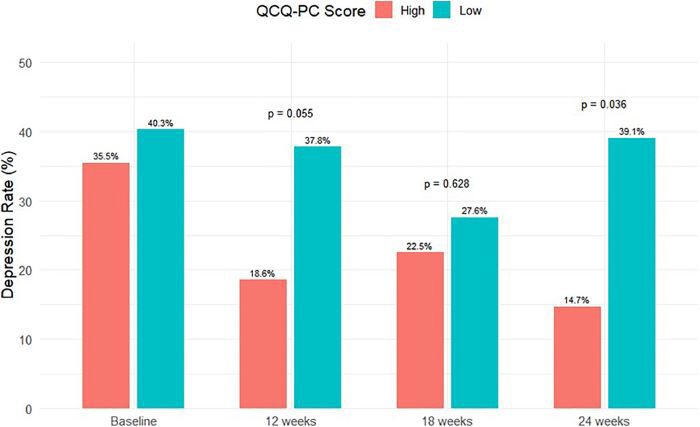High quality early palliative care doubles survival rate for advanced cancer patients and halves depression
Sep 22, 2025
|
This study is significant in that it was the first to prove that its quality directly affects the survival and quality of life of patients, not just whether they received palliative care.
Progressive cancer patients not only have limited treatment methods, but also suffer from complex difficulties such as pain, anxiety, depression, and loss of meaning in life. Early palliative care has been introduced to help, but studies so far have focused only on whether it is provided or not, and it is not sufficiently clear how qualitative levels affect patients' lives and survival.
A research team led by Professor Yoon Young-ho of the Department of Family Medicine at Seoul National University Hospital (co-author: Professor Kang Eun-kyo of the National Cancer Center and Professor Ko Go-jin of Ulsan National University Hospital) announced on the 22nd the results of a study that analyzed the effect of early palliative care on patients' mental health, quality of life, self-management ability, and survival rate on 144 patients with advanced cancer at 12 hospitals in Korea.
This study is a second analysis using randomized controlled clinical trial data from September 2017 to October 2018, and the research team confirmed the prognosis difference according to the quality of palliative care experienced by the patient.
At the beginning of the study, the quality of palliative care experienced by patients was evaluated by the 「Quality Care Questionnaire-Palliative Care (QCQ-PC)" developed by Professor Yoon Young-ho's research team. This survey is a proven tool that comprehensively measures patient experiences, including communication with medical staff, participation in decision-making, continuity and coordination of care, and emotional support. Based on the average value of QCQ-PC scores, the research team classified patients into high-quality palliative care groups (76) and low-quality palliative care groups (68), and then followed the two groups with depression (PHQ-9), quality of life (MQOL, EORTC QLQ-C15-PAL), self-management strategy (SAT-SF), and 2-year survival rates.
As a result, the prevalence of depression in the two groups at the start of the study was similar at 35.5% and 40.3%, respectively, but after 24 weeks, the high quality palliative care group decreased significantly to 14.7%, while the low quality palliative care group remained at 39.1%, indicating a statistically significant difference between the two groups (p=0.036).
The two-year survival rate was 25.0% in the high-quality palliative care group, while the low-quality palliative care group was only 11.8%, showing a difference of more than twice (p=0.0056).
In the quality of life analysis, the high-quality palliative care group showed significant improvement at 24 weeks in the existential and social support area of the McGill Quality of Life Questionnaire (MQOL), but there was no clear difference between the two groups in the EORTC QLQ-C15-PAL (European Cancer Research and Treatment Organization Quality of Life Assessment Tool), which evaluated the overall quality of life.
The self-management strategy significantly improved in the palliative care group with high preparedness and execution strategy scores at both 18 and 24 weeks, indicating that patients' ability to prepare for and respond to disease-induced crises improved.
Professor Kang Eun-kyo (Department of Family Medicine) of the National Cancer Center said, `This study has added academic and policy implications to areas that have been lacking evidence by proving that the 'quality' of early palliative care is directly related to the survival of patients.'
Professor Yoon Young-ho (Department of Family Medicine) at Seoul National University Hospital said, "In Korea, sufficient services have not yet been provided to patients in need of palliative care. In the future, we need to expand palliative care services quantitatively and introduce a system that systematically evaluates and manages quality of care to create an environment where patients can receive high-quality palliative care anywhere." he said.
The findings were published in the online edition of the international journal 『Journal of Pain and Symptom Management』.
|
This article was translated by Naver AI translator.















